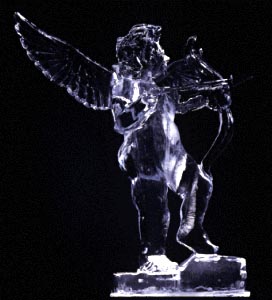Cool Restaurants
But first, what is cool?
By Paul Adams
Cool. (In the following lines, "cool" is not synonymous with good, or hip, or fashionable.) Cool does not come in neat groups of 25. Cool is malleable and permeable. It is doubtful that any two people, randomly assigned, would compile the same list of the 25 coolest restaurants in San Francisco. Even if two people did, the boundaries of their lists would shift after a month's time, at most. Cool flows.
Nevertheless, there are a variety of ways in which a restaurant can be cool, a variety of sources of restaurant cool (SRCs). And naturally the cool emanating from these sources loses its cohesion and mingles. But, that said, for the purposes of this list, we shall recognize four fundamental SRCs.
Manufactured Image
Authenticity
Stylishness/niftiness
Civility
Cool is no guarantee of a good meal, or even a good experience. But it is a force to reckon with. Below are the 25 coolest restaurants in San Francisco: Do with them what you will.
The 25 cool restaurants list.
What food writers do for fun.
Interactive murder-and-dining theater.
New Valencia Street restaurants.
[ San Francisco | MetroActive Central | Archives ]
Copyright © Metro Publishing Inc. Maintained by Boulevards New Media.
25 Bulletproof Recommendations
![]()

Tala Brandeis
This is the cool which is possessed by restaurants which are created to attract the hip. At these restaurants, only a secondary effort is given to quality of dining or comfort (in fact, an aura of discomfort is often cultivated, it being felt that this gives rise to a sensation of imbalance in the economy of cool: the restaurant is a Mecca of cool where lucky diners can come to supplicate). The pitfall here, of course, is that because cool cachet is so elusive by nature, several restaurants must fail for every one that succeeds at forcibly mining a city's vein of cool in this way.
The bohemian has always been drawn to what is perceived as unanalyzedly genuine: where the real people (real cowboys, real cab drivers) eat, as opposed to the travesties thereof that the wily restaurateur is eager to provide. While authenticity is arguably a myth, there is a deflnite aesthetic appeal to a restaurant where all is as it should be--neither the restaurant nor the clientele is pretending to be something other than what it is, and the clientele is suited to the restaurant (in contrast to a place like Planet Hollywood™, where the chain restaurant and the tourist clientele collaborate to construct a narrative in which the restaurant is exclusive and the customers are hip).
These are two variants on a single element. In San Francisco (and, earlier, the court at Versailles) it seems you need a gimmick to get attention. Ninety percent of the time, of course, these gimmicks are dumb and fall flat, but occasionally they work and can carry a restaurant. Some restaurants are a pleasure to be in simply because of the awesome bar (bar-artifact; that is, the long thing the drinks are placed on) or the clever, ludic ambiance, or the pointed classiness with which the dining transaction is carried out (sumptuous velvet booths, suave French wait staff, napkins refolded while you powder your nose--bonus point for elaborate shapes!--et cetera).
This in a way is the flipside of SRC one, in which civility is rare. Classically, the fancy-restaurant experience incorporates elements of incivility: part of the social interaction includes the diner's being put ill at ease, as the balance of the exchange favors the restaurant staff to the disadvantage of the diner--the typical diner is cowed into not asking too many questions and never returning an unsatisfactory product, both of which types of behavior are perfectly permissible in less stressful monetary transactions. An example of this disadvantage is the pressure placed by the restaurant scene upon the diner to follow rules, as a means of indexing social class by the ability to do so: choosing a wine, navigating a French menu, and so on. In the view of this author, the avoidance of that incivility is unmistakably cool. The ideal civil restaurant is transparent: diners can interact maximally with their companions and only minimally with the apparatus of the restaurant. A restaurant where one feels at ease, where one is confldent of a superlative experience and simultaneously comfortable, is civil, and civil is cool.
From the February 1998 issue of the Metropolitan.
![[MetroActive Dining]](/dining/gifs/dining468.gif)